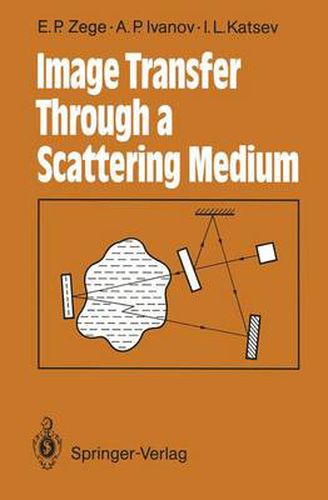Readings Newsletter
Become a Readings Member to make your shopping experience even easier.
Sign in or sign up for free!
You’re not far away from qualifying for FREE standard shipping within Australia
You’ve qualified for FREE standard shipping within Australia
The cart is loading…






This title is printed to order. This book may have been self-published. If so, we cannot guarantee the quality of the content. In the main most books will have gone through the editing process however some may not. We therefore suggest that you be aware of this before ordering this book. If in doubt check either the author or publisher’s details as we are unable to accept any returns unless they are faulty. Please contact us if you have any questions.
The world around us appears as diverse and beautiful as it does owing to the fact that light is scattered. Scattering plays two roles in the intricate process of image formation. First, it is the means by which we perceive an object. An object which does not scatter light cannot be seen. However, scattering also distorts the image observed. Even in relatively pure air, visibility is limited to a range of a few tens of kilometers owing to aerosol and molecular light scattering. It is reduced to tens of meters in conditions of mist or fog. What occurs when we look at an object through a scattering medium? For example, when a point diffuse source is being observed, the radiation undergoes multiple scattering along the path to the photodetector. Therefore, the image produced by a source of this kind (i.e., the irradiance distribution in the image plane) appears as a more or less blurred speck. What we have said so far serves as an introduction to the concept of image transfer theory, or the point spread function ..
$9.00 standard shipping within Australia
FREE standard shipping within Australia for orders over $100.00
Express & International shipping calculated at checkout
This title is printed to order. This book may have been self-published. If so, we cannot guarantee the quality of the content. In the main most books will have gone through the editing process however some may not. We therefore suggest that you be aware of this before ordering this book. If in doubt check either the author or publisher’s details as we are unable to accept any returns unless they are faulty. Please contact us if you have any questions.
The world around us appears as diverse and beautiful as it does owing to the fact that light is scattered. Scattering plays two roles in the intricate process of image formation. First, it is the means by which we perceive an object. An object which does not scatter light cannot be seen. However, scattering also distorts the image observed. Even in relatively pure air, visibility is limited to a range of a few tens of kilometers owing to aerosol and molecular light scattering. It is reduced to tens of meters in conditions of mist or fog. What occurs when we look at an object through a scattering medium? For example, when a point diffuse source is being observed, the radiation undergoes multiple scattering along the path to the photodetector. Therefore, the image produced by a source of this kind (i.e., the irradiance distribution in the image plane) appears as a more or less blurred speck. What we have said so far serves as an introduction to the concept of image transfer theory, or the point spread function ..